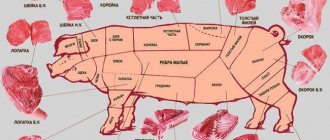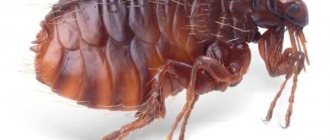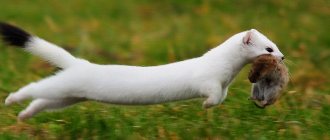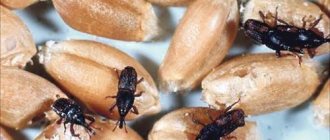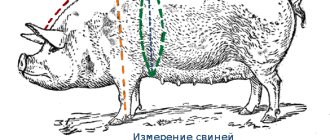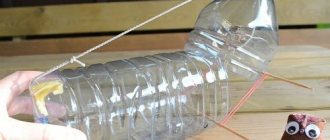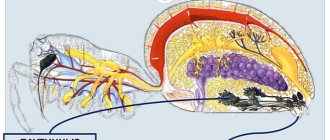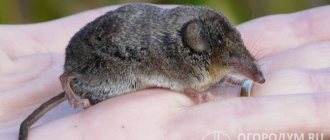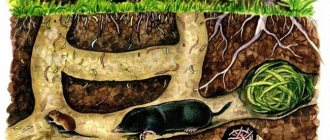In this article we will talk about how to singe a pig in different ways. The process is technically simple. But there are certain subtleties and tricks in this matter, which are simply necessary to study in order to obtain a high-quality result. The skin of the pig is burned to remove the tough bristly surface and extend the shelf life of the meat and lard. In addition, thick skin during such primary heat treatment becomes softer and tastier.
Why do you need to scorch?
It is necessary to singe a pig correctly, first of all, to rid the skin of bristles. In addition, cleaning often precedes smoking and affects the quality of the lard. If the pig is slaughtered for sale, it is necessary to singe it to give it a marketable appearance.
The choice of bristle removal partially affects the quality of the lard. If you tar a pig, the lard acquires a specific taste. It is usually advised to smoke and salt the carcass immediately after it has been seared.
Theoretically, a young piglet can be left with bristles, and during cooking you can simply remove the skin. However, this will prevent you from using the pigskin. The bristly material is not suitable for dressing and processing, and it is almost impossible to get rid of hair on a skin that has already cooled down.
Bleeding
The presence of blood in meat deteriorates its quality, so when slaughtering a pig, care must be taken to quickly bleed the carcass. As mentioned above, the ideal option is to open the carotid artery and jugular vein. Then almost all the blood will flow out of the animal itself.
If a pig has been killed by a blow to the heart, some blood will certainly collect in its chest cavity. When opening the animal, the collected liquid can be scooped out with any convenient container, and the resulting clots can be removed with a napkin or clean rag.
Stubble removal methods
If you decide to use leather, you need to choose how to remove the stubble. The most convenient and accessible method is chosen. It is recommended to get rid of stubble using one of 4 methods:
- straw, wood chips;
- gas burner;
- blowtorch;
- scalding.
Each method has its own disadvantages and advantages. However, in each case it is necessary to be careful and pay attention to the process. This plays a decisive role. It is important not to dry out the skin using fire and not to cook the carcass by removing the bristles with water.
There are alternative methods - cleaning the hide with chemicals. However, it is not recommended to do this at home. In addition, it is worth remembering the harmfulness of such methods.
Singing a pig is not enough. It is necessary to scrape off soot and burnt bristles. Usually a scraper, a knife, or a blade are used. Alternative methods - a hard brush and sandpaper are not effective enough; after the process, most of the bristles and soot remain.
Important! Properly tarring a piglet is especially important for farmers who do not use the services of slaughterhouses. Some slaughterhouses give the owner a fully prepared, dressed carcass.
Preparation for slaughter
In order for the slaughter to proceed without problems and the meat not to lose its qualities, you need to pay attention to proper preparation:
- If a boar needs to be castrated, this must be done at least 2 months before slaughter. If this is not done or the required period after castration is not maintained, the meat will be tough and smell unpleasant. No subsequent treatments will help get rid of this smell.
- Animals should not be fed 12 hours before slaughter, and should not be given water 3 hours before slaughter. This is necessary so that the animal’s intestines are completely cleaned and the meat cannot be stained with feces during the cutting process. In addition, it will be easier to lure a hungry animal out of the pen - it will follow any bait.
- The animal should not be dirty before slaughter. Inadequate living conditions and poor care can result in the pig becoming covered in a layer of dried mud. This also happens when the animal has been kept in too small a space. If this happens, the pigs are washed before slaughter. A large number of microorganisms on the skin contributes to the fastest spoilage of meat.
- When meat is to be slaughtered for sale, a veterinary opinion is required. The specialist must issue an appropriate document confirming the health of the animal. This certificate and the result of the sanitary and veterinary examination give the right to sell meat to people.
Before slaughter, you must not frighten the animal, beat it, or show aggression. Experts believe that high levels of stress in pigs dramatically deteriorate the quality of meat. This has a completely logical explanation: fear and stress sharply release a large amount of adrenaline into the blood and this does not improve the quality of meat.
How to properly singe a pig with a gas torch
It is convenient to singe a pig with a gas burner because you can efficiently clean hard-to-reach places. An additional advantage is that you can make a gas burner for scorching pig carcasses yourself. Tarring should be done according to this scheme:
- The carcass is placed on a raised platform, preferably on its back, legs spread apart.
- Turn on the gas burner and gradually singe the skin.
- It is recommended to repeat the procedure 2 times - scorch, scrape, repeat again.
- During the process, make sure that the skin does not dry out. Bubbles of fat indicate the degree of readiness.
A gas torch for singeing pigs is safer than a blowtorch. The burner does not have the property of heating up. The disadvantage of this method is that it simply dries out the skin and singes the skin in addition to the bristles. You can ruin the top layer of lard.
Features of cutting
A lot of information can be found on how to quickly slaughter a pig and cut it up correctly.
But if this is being done for the first time, then it is better to call a specialist so that he can point out the intricacies of the work. After the animal is slaughtered, the carcass is cut up. And the first thing they do is bleed. If it is in a suspended state, then wait until the blood has completely drained into a clean container provided. When the pig is slaughtered and not hung, the blood is drawn from the open peritoneum with a mug or ladle and poured into some kind of container. After the carcass is drained of blood, it is thoroughly wiped from the inside with rags. Washing with water is not recommended as this may damage the product.
The carcass is processed in several ways. It depends on the materials at hand and the purpose of the skin. It can be removed, or it can be scorched.
Searing is done with straw or a blowtorch. If you want the lard to have a specific aroma and be more tasty, then use straw for singeing.
The diet for fattening pigs can be read in this article.
Singing with straw
The pig carcass should be placed on a dense layer of dry straw and covered with it from the sides and top. The straw is set on fire. If, when dry rye, wheat or barley stalks are burned, some areas remain with bristles, you can go over them again with a blowtorch. Then the carcass is cleaned of ash and burnt bristles.
After singeing, either with straw or with a blowtorch or gas torch, they begin to scrape off the top layer of the skin, after wetting the areas of the carcass with hot water. The color of the skin will depend on how the bristles were removed. After scorching with straw it will have a slightly brownish color, after a blowtorch or burner it will be white. However, the latter also depends on the breed of the animal. For example, a Belarusian Black-and-White carcass will have the same skin color. However, like the North Caucasian or Ukrainian steppe pockmarked.
A description of fattening piglets for meat at home is described in this material.
Carcass cutting
At slaughterhouses, carcasses are cut up in a hanging state. Then the muscles and tissues are tense, and this allows you to cut the meat quickly and easily. But if this is not possible, then the carcass is gutted on a special flooring. The process occurs in the following sequence:
They cut off the head. This makes it possible to completely get rid of blood; The “apron” is cut out - that is, the fat and muscle layer on the belly; The belly is cut, starting from the chest and to the anus; Immediately remove the intestines and stomach, kidneys
An assistant can immediately remove the fat from them, and then wash the contents from the intestines under running water and put them in a separate container; After the liver is removed, the gallbladder should be separated from it with extreme care; After cutting out the diaphragm, the lungs and heart are removed. The heart muscle is cut and the resulting blood clots are removed; They wipe the inside of the carcass with a rag, separate the legs at the joints, and the head (some butchers prefer to separate the head at the beginning of the cutting process)
And then they cut it into two parts along the ridge; The half-carcasses are given time to cool slightly and dismembered according to the desired pattern. Usually six pieces; First, remove the fat and skin with a sharp knife. Front legs with shoulder blades (shoulders with ribs), hind legs with thigh (ham), neck, sternum, loin. In the area of the ham and loin, the fat is thicker and is removed in large layers. It is thinner on other parts of the carcass. To prepare salted bacon, lard from the top and sides is more suitable. To obtain rendered fat (lard), kidney intestinal fat, as well as thin lard, is used.
Culinary cutting
There are several cutting methods. It all depends on the qualifications of the butcher. The most popular methods for cutting a pig carcass:
- American. The half carcass is divided into five parts (shoulder, back, front and rear ham, side);
- English. The head is cut off, and the carcass is cut along the spine and divided into front, middle and back parts;
- German. The half carcass is divided into 8 parts. The cutting is similar to the American method, but the parts are increased by cutting the back section;
- Moscow (Russian, Soviet). The half carcass is divided into the following parts: shoulder, loin, rump, ham, brisket, neck.
Cutting up suckling pigs
A very simple procedure and does not require the intervention of a professional butcher. Everything can happen right in the kitchen. They kill with a blow to the neck and let the blood drain. They scorch over a gas burner and carefully remove the ash from the skin using a knife and hot water. Then they cut open the belly and take out the internal organs. To ensure that the pig is well-fried, small cuts are made in the pelvis and shoulder blades.
The monthly weight of Vietnamese piglets is described at this link.
How to make a gas burner for processing pigs
Not having a tool at home is a reason to make the device yourself. You can make a burner for singeing pigs with your own hands. The design includes the following elements:
- body (metal);
- nozzle;
- gearbox;
- a unit for attaching a gas cylinder;
- regulator to control fuel supply;
- gas hose;
- lever;
- flame blow-out safety device;
- head.
Detailed manufacturing instructions are demonstrated in numerous videos. Create a gas burner for pigs with your own hands according to the following scheme.
- First, the handle is made. It is acceptable to use an old soldering iron handle or unnecessary pipes. The handle should remain cold.
- Create a steel body. It is permissible to use a brass rod with a diameter of 2 cm.
- The divider is made from the same rod, with 4 holes for oxygen circulation. The lack of oxygen will make combustion impossible.
- The divider is pressed forcefully into the body. It is necessary to install an internal flange with clearance.
- They make a nozzle. A metal rod is used for this. A drill with a diameter of 2 mm makes a blind hole. A 4 mm hole is made in the jumper. They are hammered and sharpened with sandpaper.
- A gear hose (rubber or fabric) is attached to the end of the tube and secured with a clamp or screwdriver. The hose is taken from specialized materials; using improvised materials is risky.
- Then the optimal pressure in the connected gas cylinder is set.
Important! A homemade gas burner is suitable for singeing a pig in the same way as a purchased one. The difference is the level of security. The purchased model is a guarantee that the tool meets the required standards.
How to singe a pig or pig with straw
Singing a pig with straw is considered a crude but simple method to treat the carcass. Some recommend using this method only when preparing a carcass for yourself, and tarring piglets for sale using other methods.
- The carcass is placed on the ground. A heat-resistant table is suitable, but the ground is more convenient; removing ashes and scraping stubble will be more convenient in an unlimited space.
- Cover the side with straw and set it on fire. You should watch the combustion. Strong flames should be put out with burlap.
- The ashes from the burnt straw are removed along with the burnt bristles. It is advisable to use additional tools.
- Turn the carcass over and repeat the steps. It is important to place the straw evenly on both sides of the pig.
Properly singeing a pig with straw is quite simple. If necessary, straw is replaced with thin aspen chips. Scorching a pig with wood chips is faster than scorching with straw due to the high temperature of the fire. Soot and bristles should be scraped off carefully using a scraper. Some people recommend scrubbing with a stiff brush, but this method is ineffective.
Add a special aroma with smoke
Now the burner can be put aside, and the first black layer that has formed must be removed. The work can be done with the blunt side of a knife or a soft wire brush.
It is very important to prevent damage to the integrity of the skin during the singeing process.
When the bristles are completely removed, the carcass is burned “black”. Areas such as the back and legs require longer exposure to fire, but the skin on the abdomen is very delicate - the treatment of these areas should be more delicate.
The next step is to fill the tarred carcass with water. The skin became very dry under the influence of fire and, if it is not moistened, when turning the pig over, it will begin to crack. Additional moisture makes further cleaning easier.
Now turn the pig over to the other side and repeat all the steps. The legs, head, ears and tail are areas that require particularly careful singeing. Hooves can be easily removed by first warming them up with a burner flame. To avoid burning your hands, you need to wear thick household gloves.
To make the meat and lard especially flavorful, the process of preparing the carcass for cutting can be completed by scorching with straw or hay.
To do this, the pig's body is covered with a small amount of straw, which is immediately set on fire. As soon as the fire spreads across the entire surface, you need to cover it with a bag or other durable cloth. The result of this simple action is amazing. Subsequent times, when preparing meat “for yourself,” you will always “flavor” it with the smoke of straw.
How to tar a pig or pig with a blowtorch
The blowtorch method is similar to the gas torch method. The difference is that the pig will be processed using propane.
- The pig carcass is placed on the table for convenience. It is more convenient to leave a large pig on the ground.
- Turn on the blowtorch. It is advisable to adjust the temperature before scorching the pig.
- Carefully singe the bristles, including in hard-to-reach places. Scorching will take time, you should take into account the necessary breaks, it will take longer than cleaning a pig with a gas torch.
- The carcass is turned over as needed. The ears, head, and tail are treated especially carefully.
- Some people advise doing tarring twice, cleansing the skin as thoroughly as possible.
It must be remembered that the blowtorch gets hot. You will need to take breaks from working; some blowtorches explode due to overheating. The process will take longer than if you scorch with straw or a gas burner. The advantage of a blowtorch is the ability to process the pig more thoroughly than with other methods.
It is advisable to scrape the skin with a blade, scraper, or knife. But it is important to remember that the skin should not be damaged. You should not overdry the skin; you should also not singe it to the point of charring the skin.
Important! A blowtorch and gas burner make it possible to process the carcass deeply, adding aroma and flavor to the meat. Tarring with straw is convenient, but it will be difficult to scorch deeply.
How to singe a pig to add flavor
After removing the bristles, it is recommended to do an additional roasting, which gives the lard and meat a specific aroma.
- The carcass, devoid of bristles, is burned until it turns black. The back and legs are treated longer than the skin of the abdomen.
- Pour water over the skin, making it softer and more elastic. Firing makes the skin fragile, hard, brittle.
- Turn the carcass over and repeat the procedure. The pig should be evenly burned, otherwise the aroma and taste will be different in different pieces.
- The hooves are removed by heating with a burner flame. Remove using gloves to prevent burns.
The result is aromatic lard, meat ready for smoking and salting. It is permissible to freeze raw materials, make minced meat, and use them at your own discretion.
Slaughtering pigs at home: description of the process
Slaughtering pigs at home
Preparing a pig for slaughter
On the eve of slaughter, the pig is given only clean water so that the stomach and intestines are freed from food debris, which makes evisceration of the pig easier. Pig slaughter
It is performed with a sharp, strong, rigid knife with a blade of the following dimensions: length 18-22 cm and width 2.5-3.5 cm. The pig is struck at the base of the neck, at the transition of the neck to the chest, two fingers above the front end of the chest hand.
The knife is stuck into the pig slightly at an angle, towards the back. In this case, large blood vessels leaving the heart are cut, but the heart itself is not touched by the knife. It is not good to strike at the very heart, since in this case the heart immediately stops working and will not have time to expel all the blood from the body through the pig’s wound. Complete bleeding contributes to better preservation of the carcass. Before slaughter, to the pig from thrashing, it can be stunned by hitting it on the forehead with a wooden mallet. If the knife is directed correctly when slaughtering a pig, death occurs within 1-2 minutes. A vessel is placed under the wound to collect blood. Still fresh blood is beaten with a panicle, after which it no longer coagulates, since the fibrin component of the blood remains on the branches of the panicle, which actually causes blood clotting. After this, the pig's blood
is drained into a clean vessel, at the bottom of which you can put a pinch of salt, and then the blood is placed in a cold place. It cannot be stored fresh for a long time and it is better to put it into use as soon as possible, for example, to prepare blood sausages. Blood amounts to 3 - 4% of the pig's live weight.
Singing a pig
When a pig is singed, the bristles, of course, disappear. Only in simple pigs can the valuable back bristles be pulled out before singeing. When seared, the skin dries out, is better preserved and protects the meat from spoilage longer. lard becomes tastier. Searing the pig is recommended when preserving pork for future use by smoking. Therefore, even in slaughterhouses, sometimes after scalding, the carcass is lightly scorched in special ovens. At the same time, the remaining bristles are also singed. Singeing in small farms is done in this way. The killed pig is placed on the ground on its side or stomach, with its hind legs spread, covered with straw, which is lit. When the straw burns, the pig, if it was singed, laid on its side, is turned over to the other side, which is singed in the same way as the first. They make sure that there are no differences, i.e. skin burns with blisters. Unburnt areas with remnants of bristles are added to the fire with a bunch of lit straw. After singeing, clean off the burnt bristles with a broom or broom and place the pig on a bench or table, pour water over it and scrape the skin with a blunt knife, pouring water all the time. After this, the pig is suspended by its hind legs and the carcass is scraped clean, pouring water on it.
Scalding a pig
Scalding a pig
requires a little more fiddling since you need to prepare hot water. When scalded, the skin turns out white (unless, of course, pigs have white bristles and skin), it is softer, moister, but during long-term storage it is easier to lick off. The actual scalding of a pig is done like this. Hot water is poured into a vat or barrel so that the lowered hand can endure it a little. It is better to measure the water temperature with a thermometer. The temperature should be no higher than 68°-60° Réaumur for a medium-sized pig and about 64° Réaumur if the pig is very large. It is not good to immerse a pig in boiling water, otherwise the skin may burst in different places. A pig immersed in hot water is often turned while holding
her by a rope wrapped around the carcass behind the front legs. At the same time, hot water is available everywhere. It’s good to pull different parts of the carcass out of the water and into the air from time to time. Then they try to see if the bristles are easily pulled out, which serves as an indication of the end of scalding. The pig is pulled out onto the table and scraped off all the bristles with a dull knife or a special scraper, pouring hot water over the cooled areas so that the bristles are easier to clean off. Finally, slits are made on the carcass' hind legs between the hoof and hock. The ends of a wooden stick 45-53 cm long are stuck into these slits, on which the carcass is hung and doused with water from a bucket.
How to butcher a pig carcass
Pig evisceration
carried out immediately after singeing or scalding, while the carcass has not yet cooled down and it is easier to remove the inside. An incision is made with a knife along the middle of the abdomen from the pubic symphysis to the end of the sternum. In a hog, when making a longitudinal incision in the belly, at the site of the exit of the genital member, it is necessary to make two lateral incisions, after which the connection of the pubic bones of the pelvis is cut, and the genital member is pulled out through this hole. They cut it off at the bladder. The insides are removed through an incision in the abdomen, i.e. large and small intestines, stomach, liver, spleen, bladder and kidneys with adrenal fat. The rectum is cut out with the anus, and in females, along with the vagina. Remove the inside of the pig carefully so as not to tear the pig’s gall and bladder bladders, as well as the intestines, and not spoil the meat. The lungs and heart are removed by cutting the chest bone with an ax or knife and hammer. Having gutted the carcass, it is washed inside with water and wiped with a clean cloth.
Gutting a pig carcass
It is carried out only after the carcass has completely cooled (preferably in a cold place where the temperature is about 0° Reaumur), often the next day after gutting. As meat and lard cool, they become firmer and easier to cut. In addition, meat from a well-cooled carcass is better preserved when storing for future use. Poorly cooled meat before cutting a pig carcass, sometimes even salted, begins to deteriorate in the middle of large pieces. Methods for cutting a carcass may be different. In a simple, home-made cutting method, the carcass is cut crosswise into front and back parts. The back part is separated immediately after the hams and goes to the hams. The front part is often used for fresh consumption, after cutting into parts: head, front legs with loparka, brisket, etc. In many slaughterhouses in Russia, cutting is done this way. The head is cut off first behind the ears, and the carcass is cut into six parts: 1) neck, 2) front legs with shoulder, 3) brisket, 4) back with loin, 5) abdominal edge and 6) hind legs.
Removing stubble using scalding method
Removing piglet bristles by scalding is only possible on freshly killed animals. If singeing can be carried out at any time while the pig is still warm, then scalding must be started immediately.
- Prepare a vat of hot, not boiling water. The volume depends on the size of the pig.
- The carcass is lowered using ropes.
- The piglet is constantly turned with a rope attached. The entire skin should be soaked evenly.
- After waiting for the skin to soften (the bristles should come off easily), the carcass is removed.
- Scrape off the bristles with a scraper or blade. Tools should be kept sharp, free of rust and damage.
- Places where separation is poor are watered with hot water several times as needed. It is prohibited to use boiling water.
The scalding method is often used when the carcass is not planned to be salted or smoked in the future.
Important! Ridding a piglet of stubble is not a mandatory procedure, only desirable. It is necessary to remove the bristles if you plan to further use the skin.
Which animal is not subject to slaughter?
There are a number of cases where it is not recommended to slaughter animals for a period of time. Let's look at when doing this is strictly prohibited:
- The pig is in heat. It is necessary to temporarily postpone the slaughter. During this period, meat has an unpleasant taste and odor that cannot be eliminated. This is a temporary phenomenon and its explanation is simple: during the hunting period, the females have a very high concentration of sex hormones in their bodies. In order for this period to pass successfully, it is recommended to wait 7-14 days. If the animal has decreased or completely lost its appetite, behaves aggressively, restlessly and often grunts, this may mean hunting, which means that slaughter should be temporarily abandoned.
- The animal showed alarming symptoms, indicating the onset of some kind of disease. It is forbidden to slaughter such animals; you must first accurately diagnose and cure the disease, then wait the necessary time and only after that allow them to be slaughtered. Sometimes it is even necessary to dispose of sick animals - when it is some kind of dangerous and incurable disease. In such cases, it is strictly forbidden to eat meat; carcasses must be destroyed. The sick animal is apathetic, has no appetite, motor activity is reduced to a minimum, and uncharacteristic discharge may be observed. The veterinarian must examine the entire pig population, isolate patients and prescribe treatment.
- The animal has undergone vaccination or treatment. In order for the meat to be eaten without problems after these manipulations, at least 2-3 weeks must pass. This applies to the course of treatment with antibacterial or anthelmintic drugs. Throughout this period, harmful substances can remain in the meat, after which they are safely eliminated from the body.
